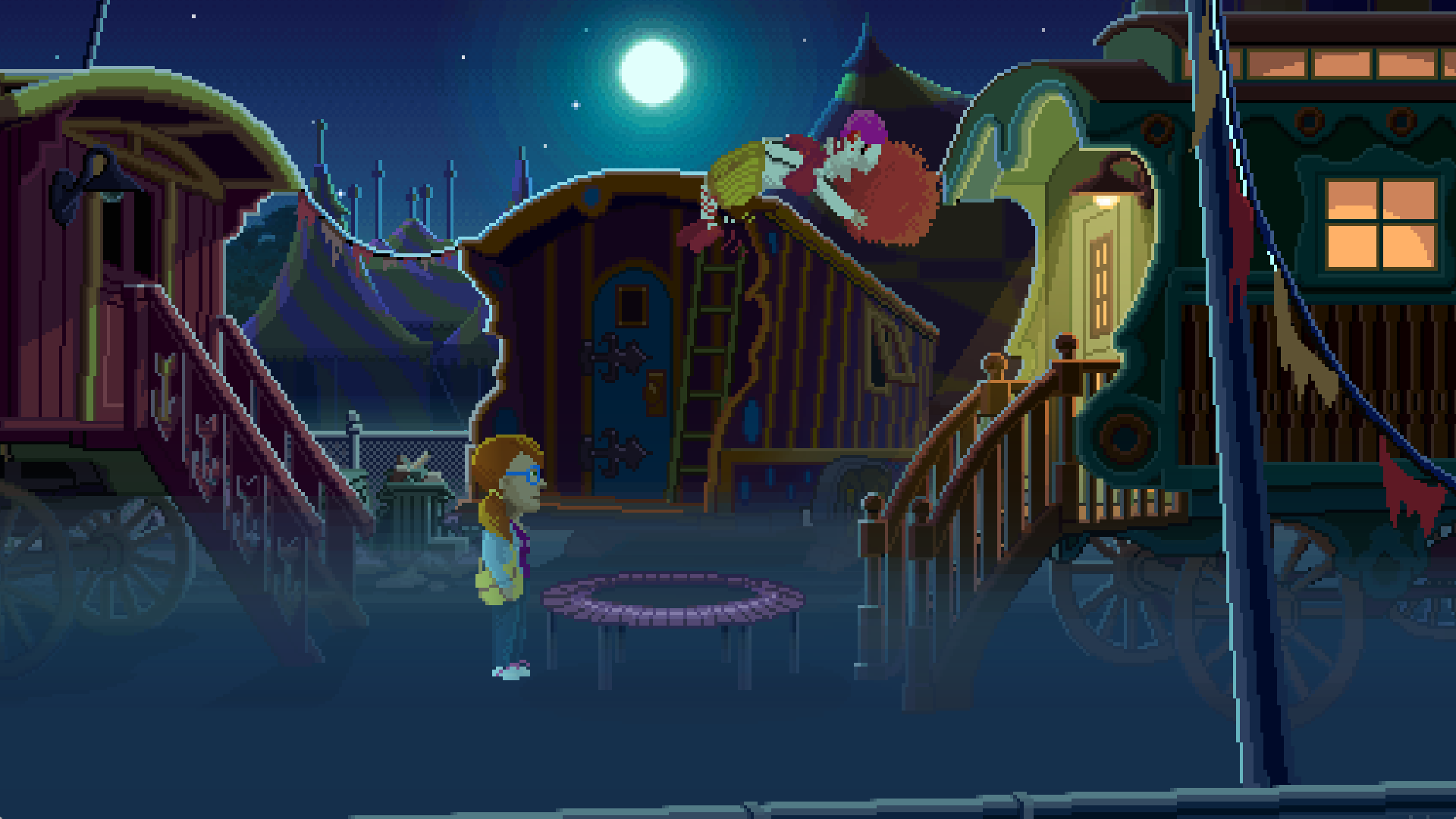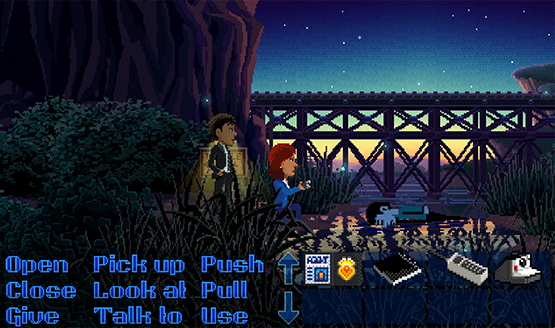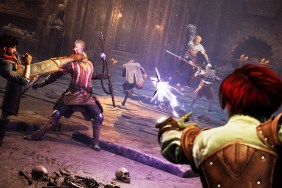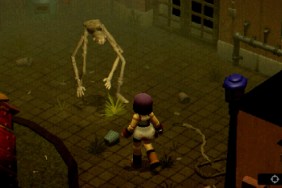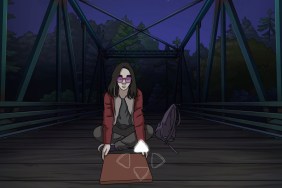1987 was the release of Maniac Mansion. It would be the start of long and storied career for both Ron Gilbert and Gary Winnick, two of gaming’s most lauded graphic adventure game creators who went on to create The Secret of Monkey Island in 1990. These point-and-click games built on the foundations of text adventures that came before them, and set the stage for many games as we know them today. Reuniting nearly three decades later, Gilbert and Winnick launched a Kickstarter to create a spiritual successor to those early games, and from that campaign was born Thimbleweed Park.
Thimbleweed Park is the Scary Movie of point-and-click adventure games, most notably those of Lucasfilm Games fame, the likes of which Ron Gilbert and Tim Schafer might have had their hands in. And yet, even while it parodies, references, and makes fun of itself nearly every step of the way, Thimbleweed Park remains quite an incredible and engrossing adventure game to its own credit. It embodies a kind of silly depth that mimics the kinds of games that have been re-popularized through remasters and re-releases, like Day of the Tentacle, Full Throttle, and Grim Fandango.
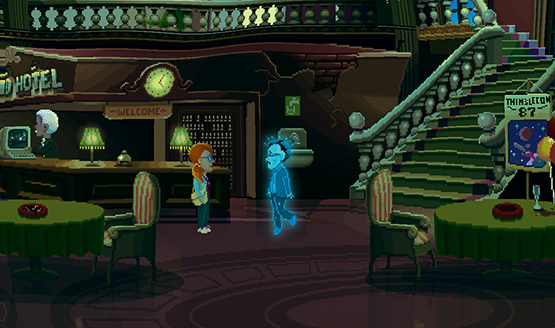
Had there not been a surge of modern interest in these old LucasArts games—not to mention Telltale’s entire business model revolving around a modernization of the genre — I might have said that Thimbleweed Park falls into a pretty niche category. Instead it becomes a time capsule, allowing younger players a glimpse into games of the past through the mind of a man who was key in creating them, and older players can get nostalgically wistful about the puzzle games of yesteryear. Think of it like a reunion tour of a classic band. Headliners Ron Gilbert and Gary Winnick take the stage once more, all their classic moves in tow.
Classic Graphic Adventure Game
Thimbleweed Park forgoes modern amenities, and opts for that classic adventure game style. You need to click to get around the screen, use the right verbs to combine items or use them in the right places, and there will be a lot of trial, error, and cavorting back and forth from location to location as you figure out each puzzle. This is a puzzle game that encompasses five characters and a full map, requiring each of their individual relationships and skills to solve a variety of puzzles in a very non-linear design. You may end up picking up an item early on that has no relevance until far later, or visiting a location that will only have meaning to a different puzzle. I worried that it would fail to balance its own self-referential humor with puzzles that actually made sense, but never once did I find myself so baffled by a puzzle that the solution didn’t provide a “duh” moment when I finally figured it out.
This is in stark contrast to poorly designed adventure games that can often reside so deeply within a creator’s mind that the player has a hard time figuring out their intentions with a specific puzzle design. The harmony between these two components—the fourth-wall breaking humor and the deep, yet not so obscure puzzle designs—is part of what makes Thimbleweed Park shine. It shows decades of experience, thought, and care put in by the game makers that fathered the genre. However, those classics were mouse and keyboard games, and those roots are felt here. A controller was not front of mind in Thimbleweed Park’s design, though I’ve used the touchpad as a mouse more than I ever have before.
There’s an in-game hint line that you can call using phones found around the town if you get stuck, and each character has a to-do list that helps guide you to what needs to be done next. Luckily for you, the game released on most other platforms back in March, so if you do get desperate, there are plenty of guides. I would highly recommend trying to complete the game on your own first though, as much of Thimbleweed Park’s personality comes from character and item interactions that occur outside of the main puzzle solutions, not to mention solving the puzzles for yourself provides a real sense of accomplishment. For this reason, I would also recommend not playing on casual, which cuts out about half of the puzzles, and leaves in many items with little to no context.
It Starts With a Corpse
A corpse rotting (pixelating, according to the characters) in the water beneath the bridge into Thimbleweed Park is what sets off the mystery, and two “FBI agents” arrive on the scene to work the case. What seems to be a simple murder mystery quickly spirals into a town-wide conspiracy, dragging in a cursed clown who can’t remove his face paint, an avid game programmer returning to her small town roots, and a ghost stuck haunting a hotel as additional actors in this grand story. It’s worth reaching the end for the big twist and a brilliant puzzle solution three years in the making.
Even if you know what you’re doing, Thimbleweed Park will take over five hours to complete, and for those brave souls willing to weather the point-and-click puzzle storm on their own, you can easily expect eight to ten hours, or even more depending on how much you are willing to explore, listening to the wealth of dialog and discovering every secret.
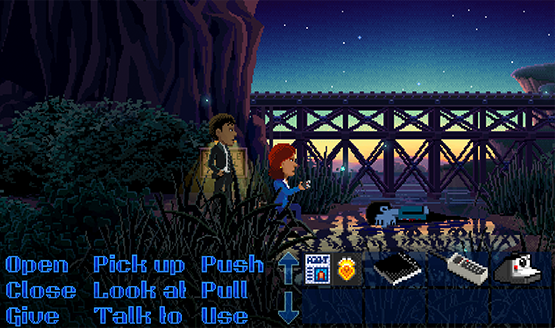
The voice acting is a notable feather in the cap of Thimbleweed Park, professionally done in such a way that parodies the relative lifelessness of VO in early graphic adventure games. It’s that kind of purposeful B-movie “it’s so bad it’s good” voice recording that really shines and brings the nostalgia to light. Every character has their own muted personality, playable or not, and there are some hilarious fourth-wall breaking references throughout to the voice over work, the re-use of actors, animations, and character models. It’s yet another way that Thimbleweed Park is so self-aware, knowing and acknowledging that it’s a graphic adventure game.
My comparison to Scary Movie may have been a wrong one. There’s more sophistication here than that. Instead, I’ll say that Thimbleweed Park is the Cabin in the Woods of point-and-click graphic adventure games. Its self-referential awareness of its own existence belies a level of thought and planning that simple parodies do not. It leans into the sins of the past, and comes out all the better for it. This isn’t a modern day triple-A title, but if you want a taste of why the Ron Gilbert classics are so beloved by many longtime gamers, Thimbleweed Park is a window into the past that shouldn’t be missed.
Thimbleweed Park PS4 review copy provided by developer. For more information on review scores, please read our Review Policy.
-
A self-aware parody of classic graphic adventure games
-
Ron Gilbert and Gary Winnick at the helm
-
Great length for an inexpensive game
-
Modern day gamers may miss some modern gaming amenities
-
Plays very much like a PC adventure, hard to reconcile a cursor with a controller
Thimbleweed Park PS4 review
-
Thimbleweed Park PS4 review #1
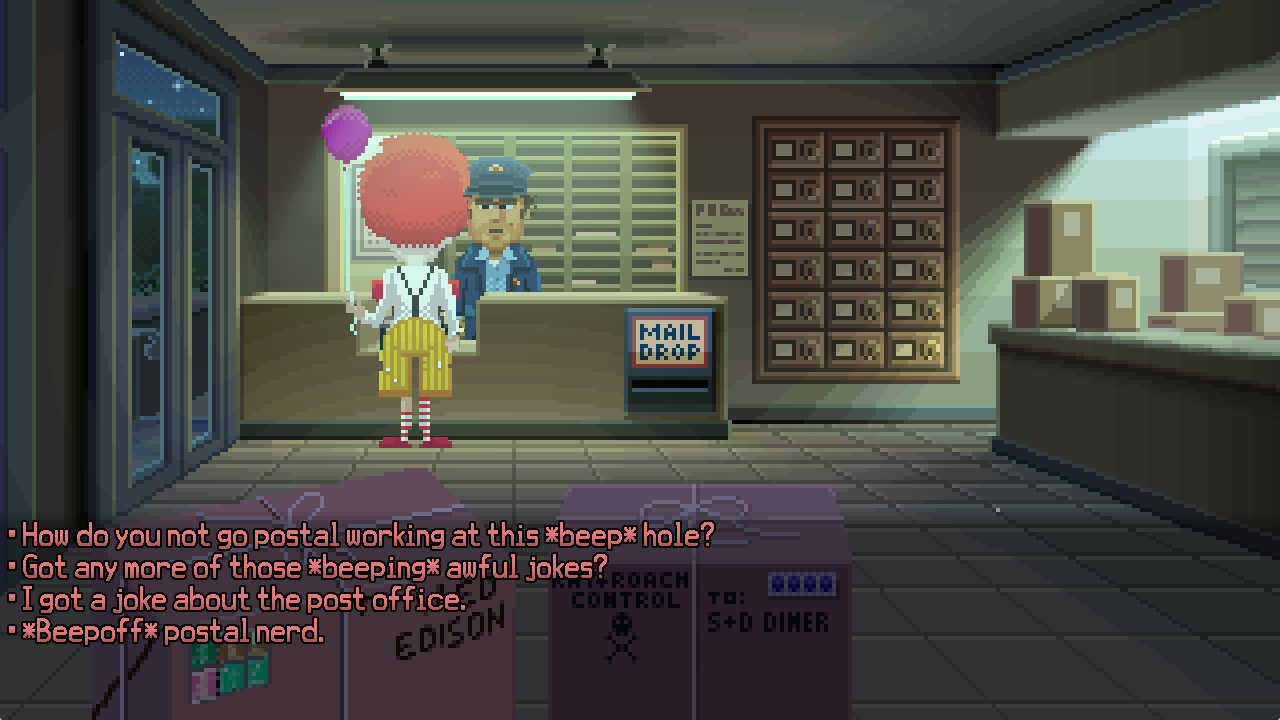
-
Thimbleweed Park PS4 review #2
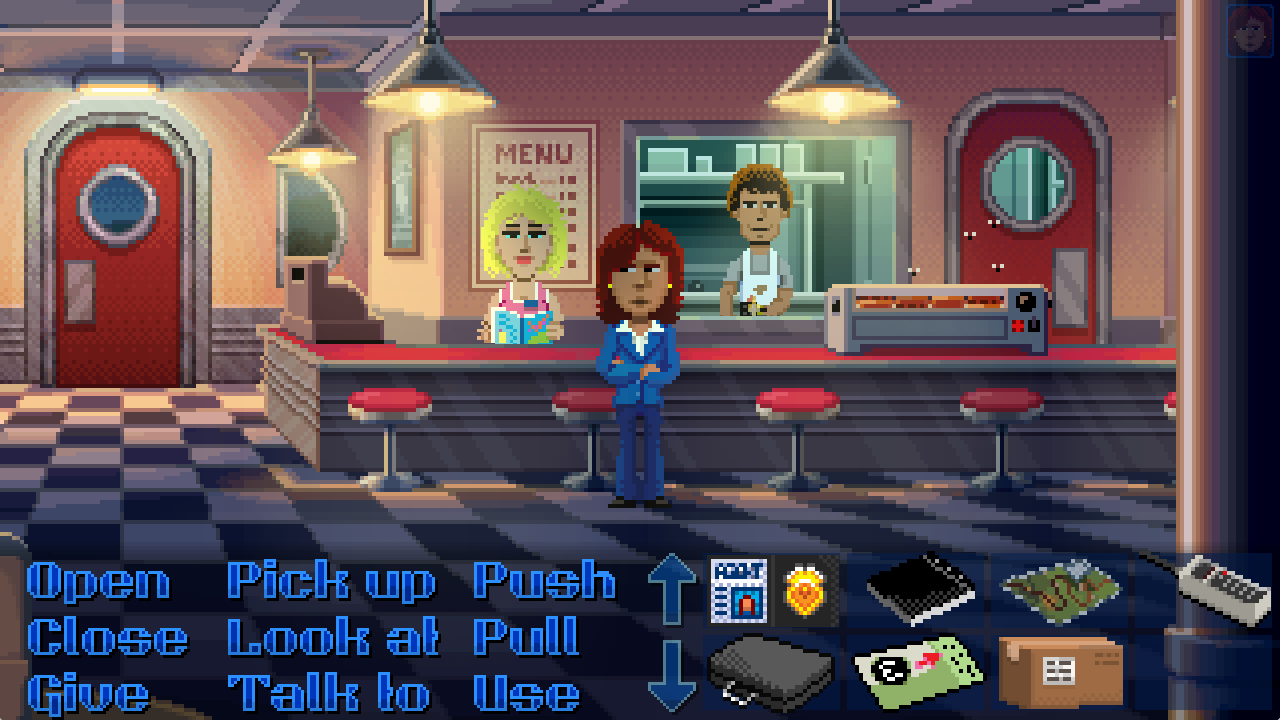
-
Thimbleweed Park PS4 review #3
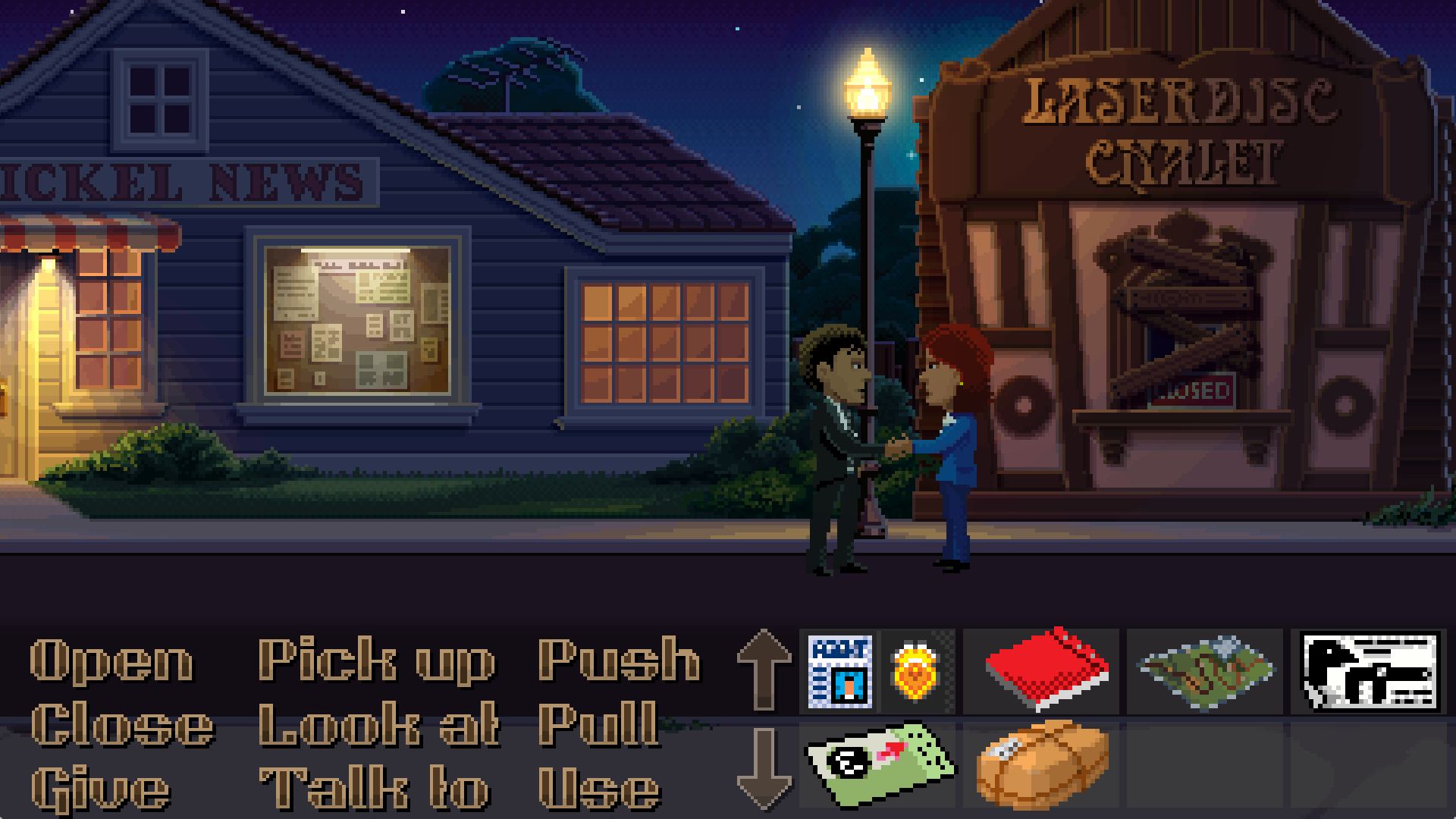
-
Thimbleweed Park PS4 review #4
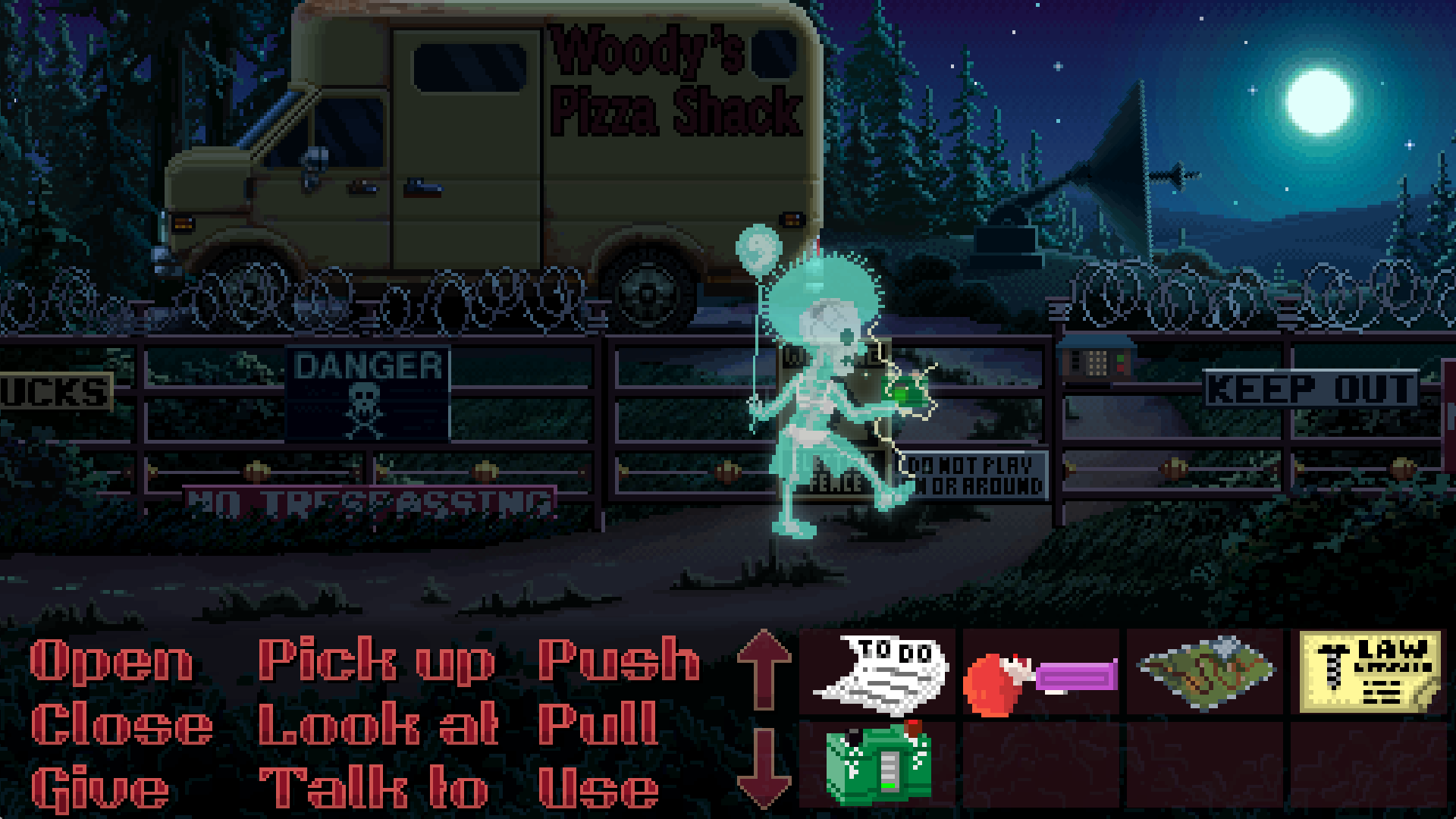
-
Thimbleweed Park PS4 review #5
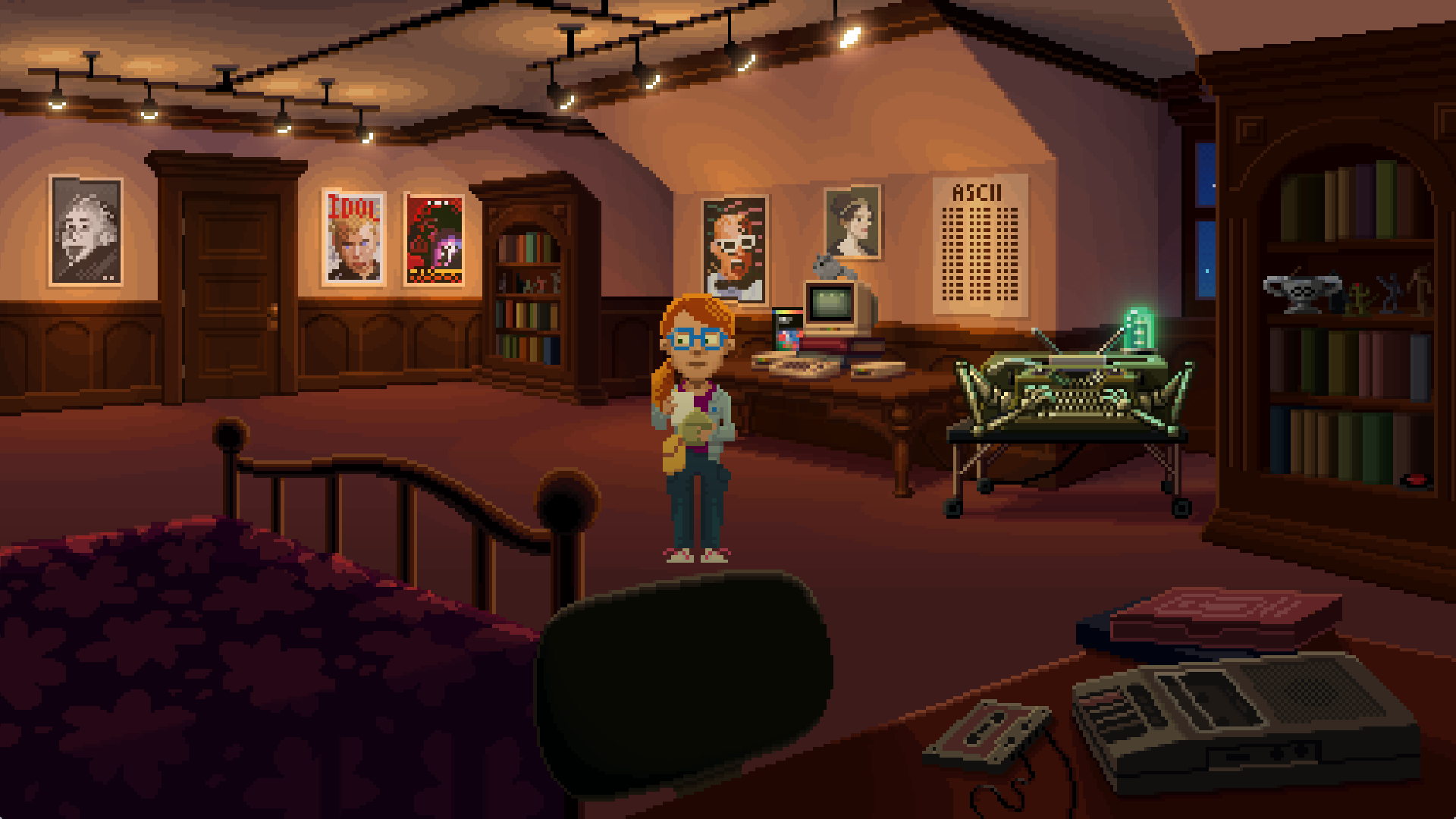
-
Thimbleweed Park PS4 review #6
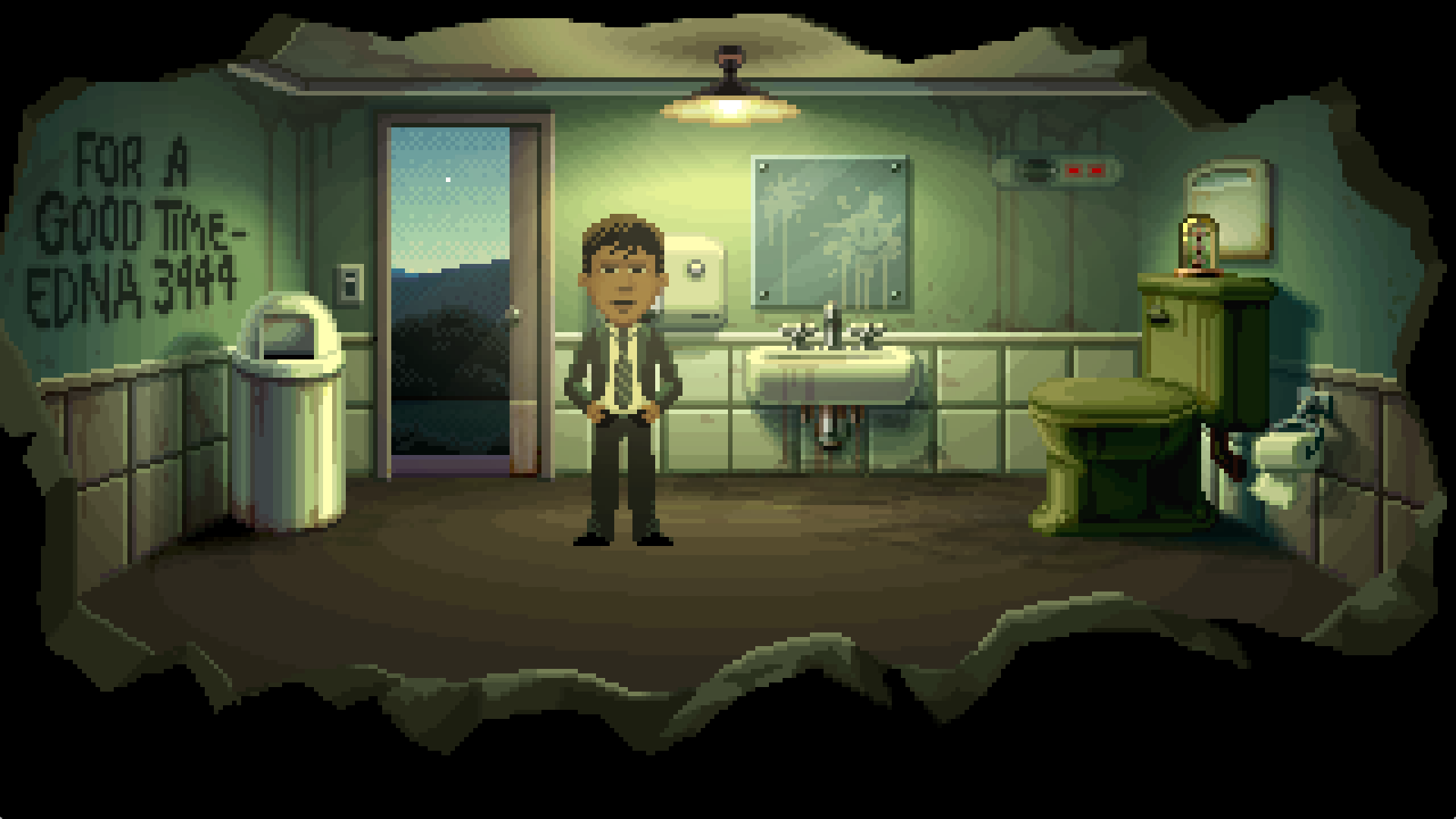
-
Thimbleweed Park PS4 review #7
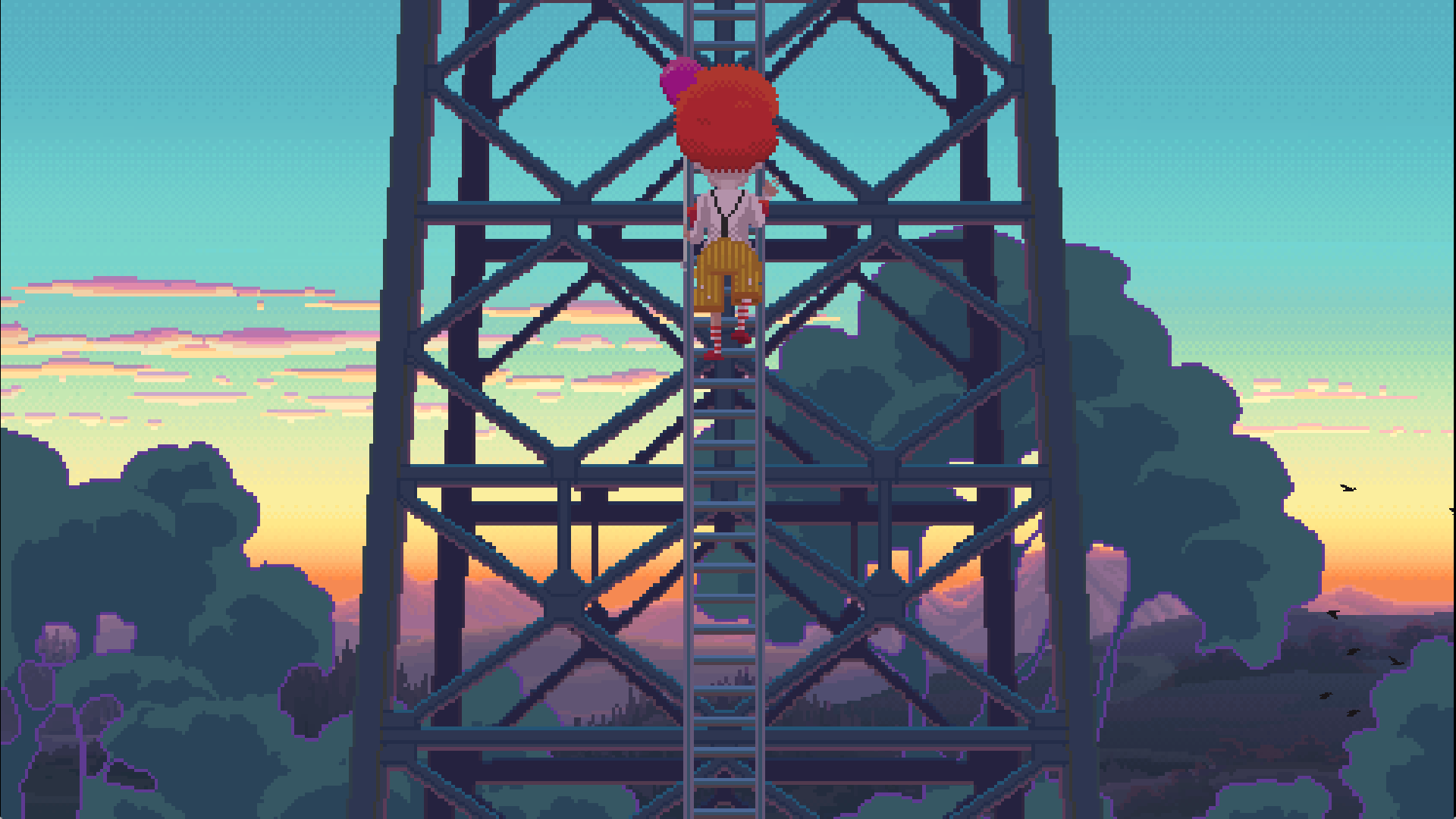
-
Thimbleweed Park PS4 review #8
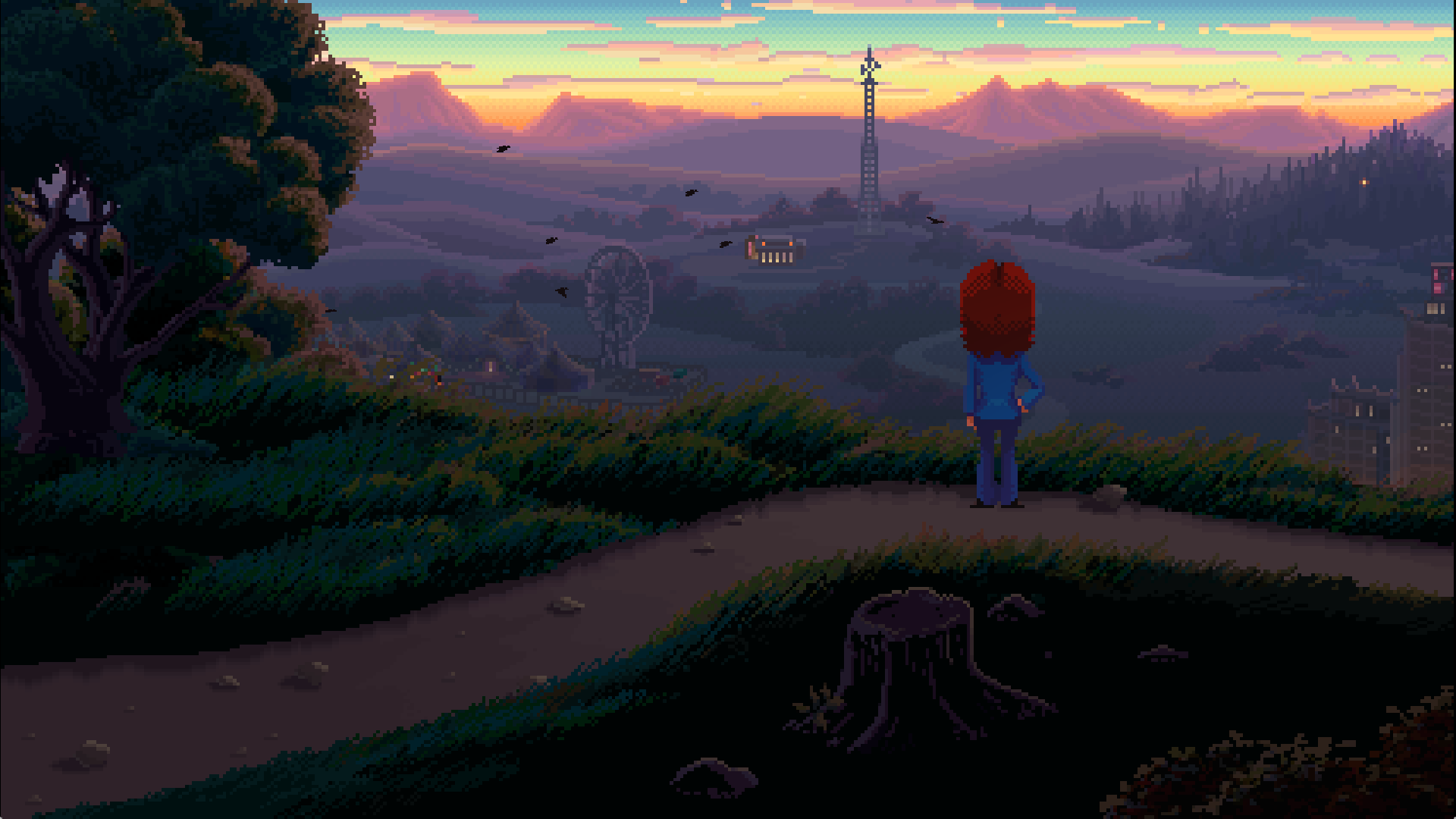
-
Thimbleweed Park PS4 review #9
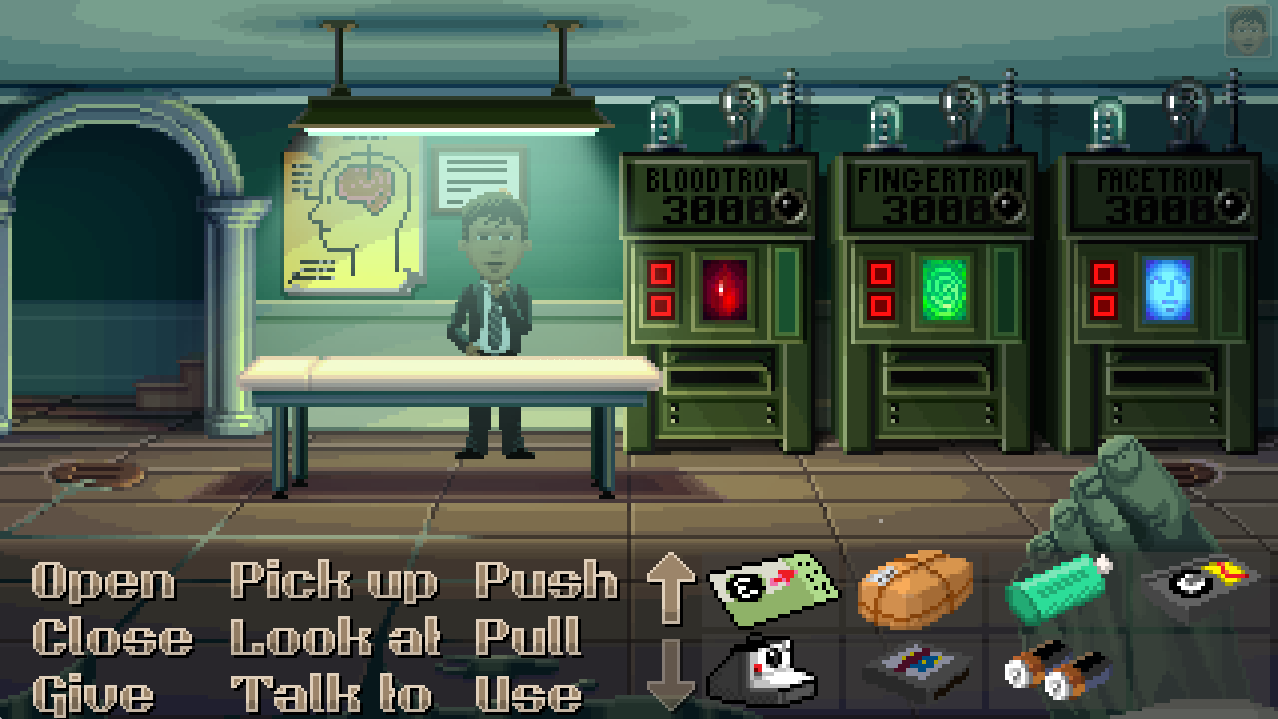
-
Thimbleweed Park PS4 review #10
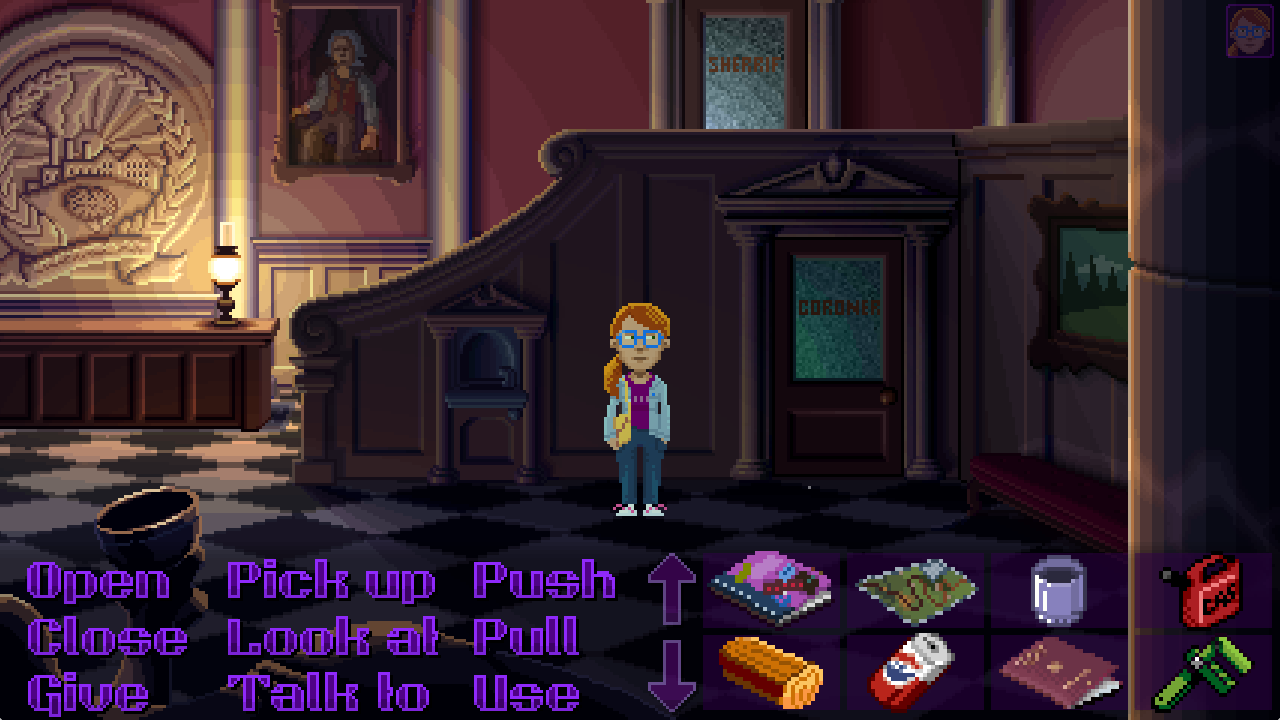
-
Thimbleweed Park PS4 review #11
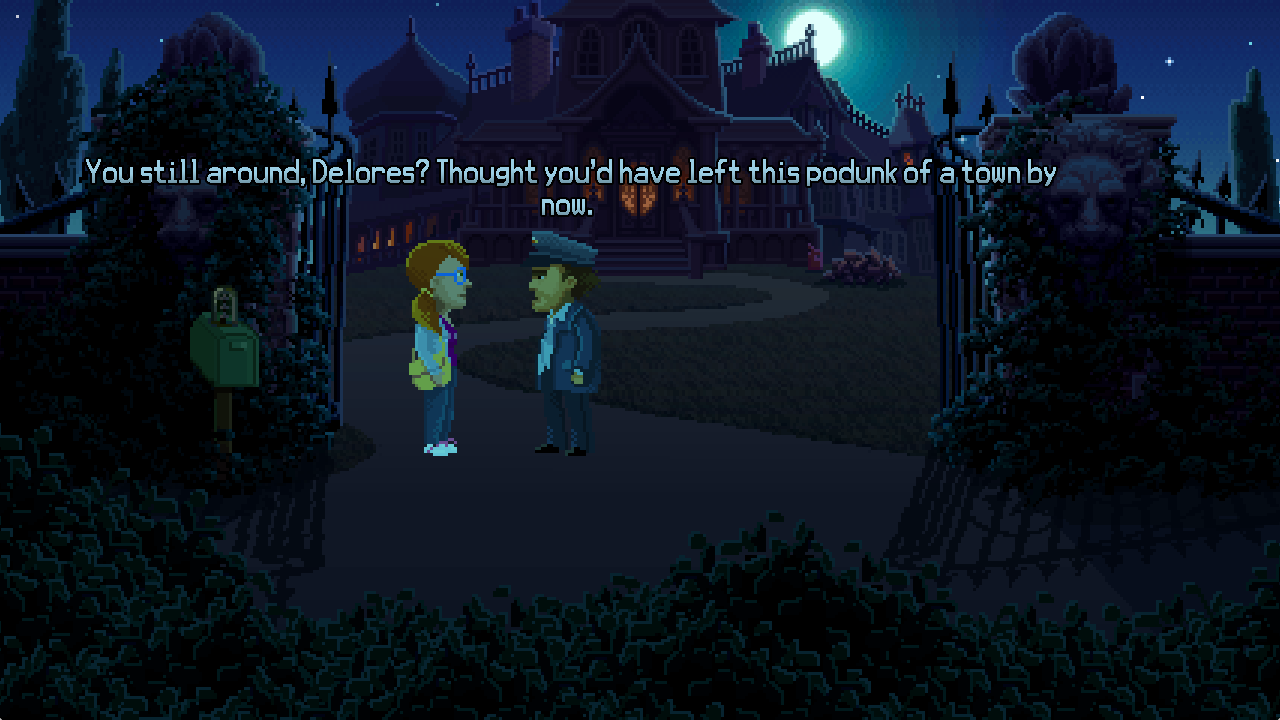
-
Thimbleweed Park PS4 review #12
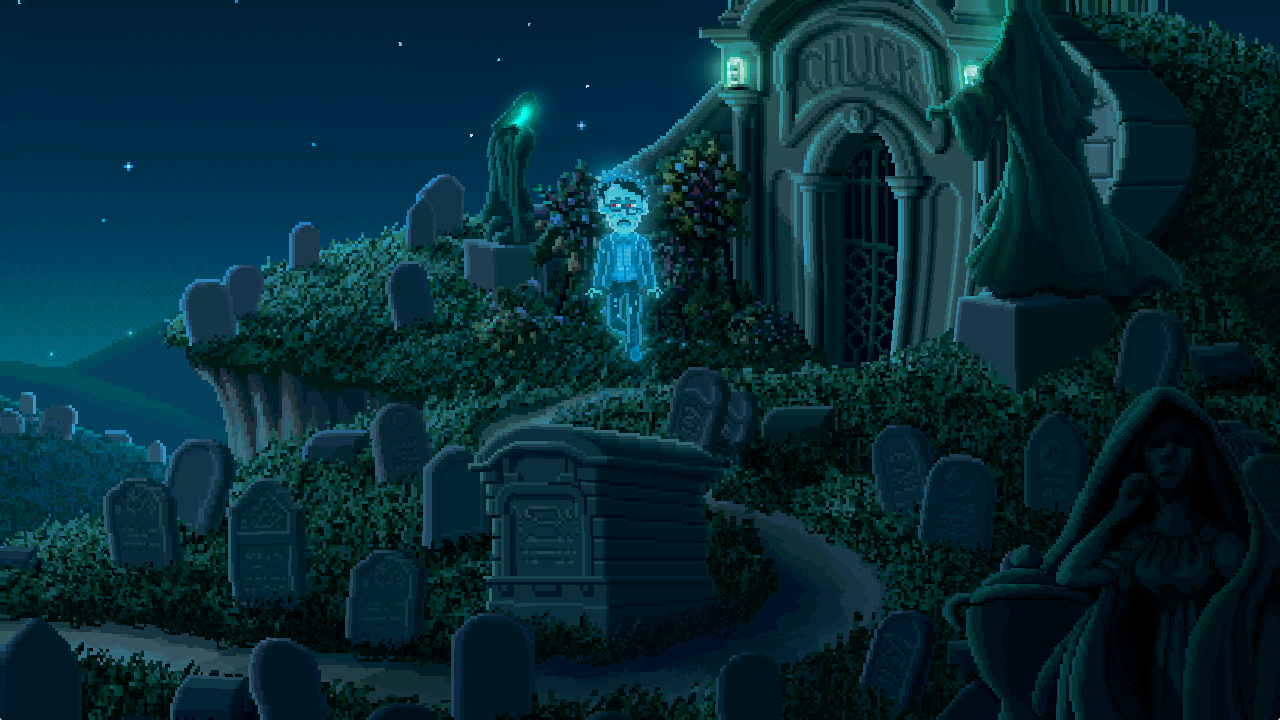
-
Thimbleweed Park PS4 review #13
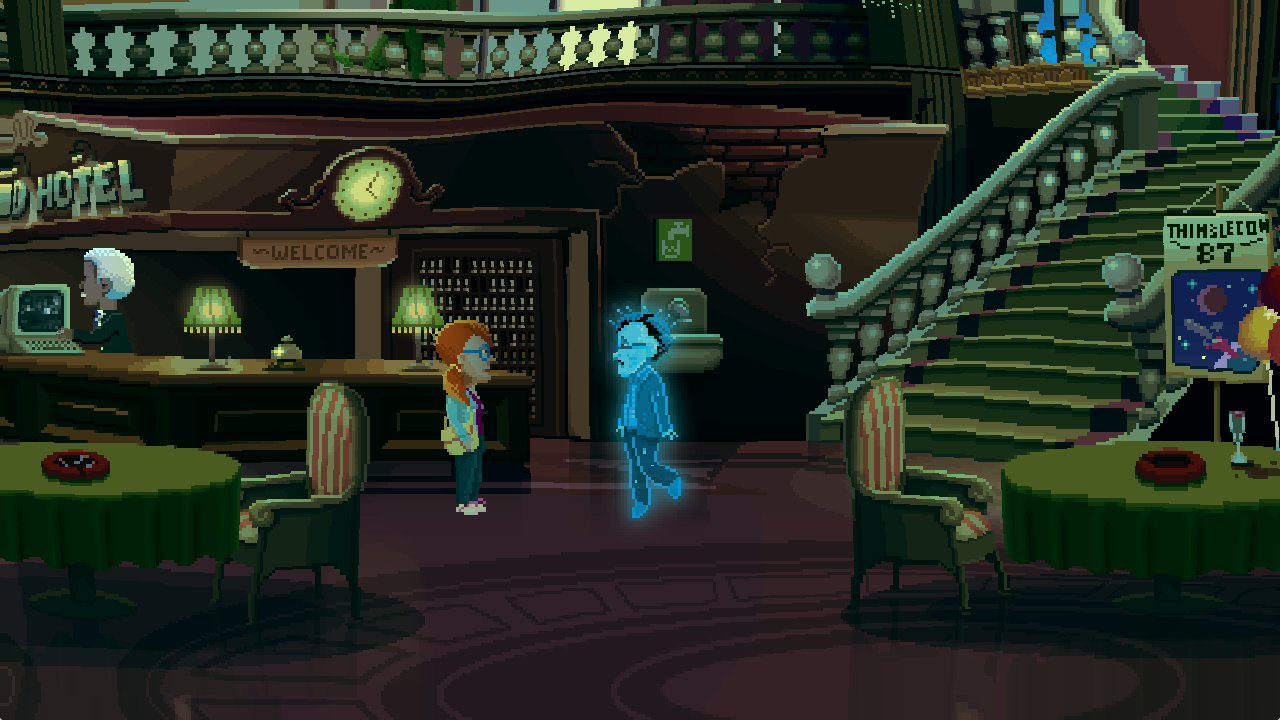
-
Thimbleweed Park PS4 review #14
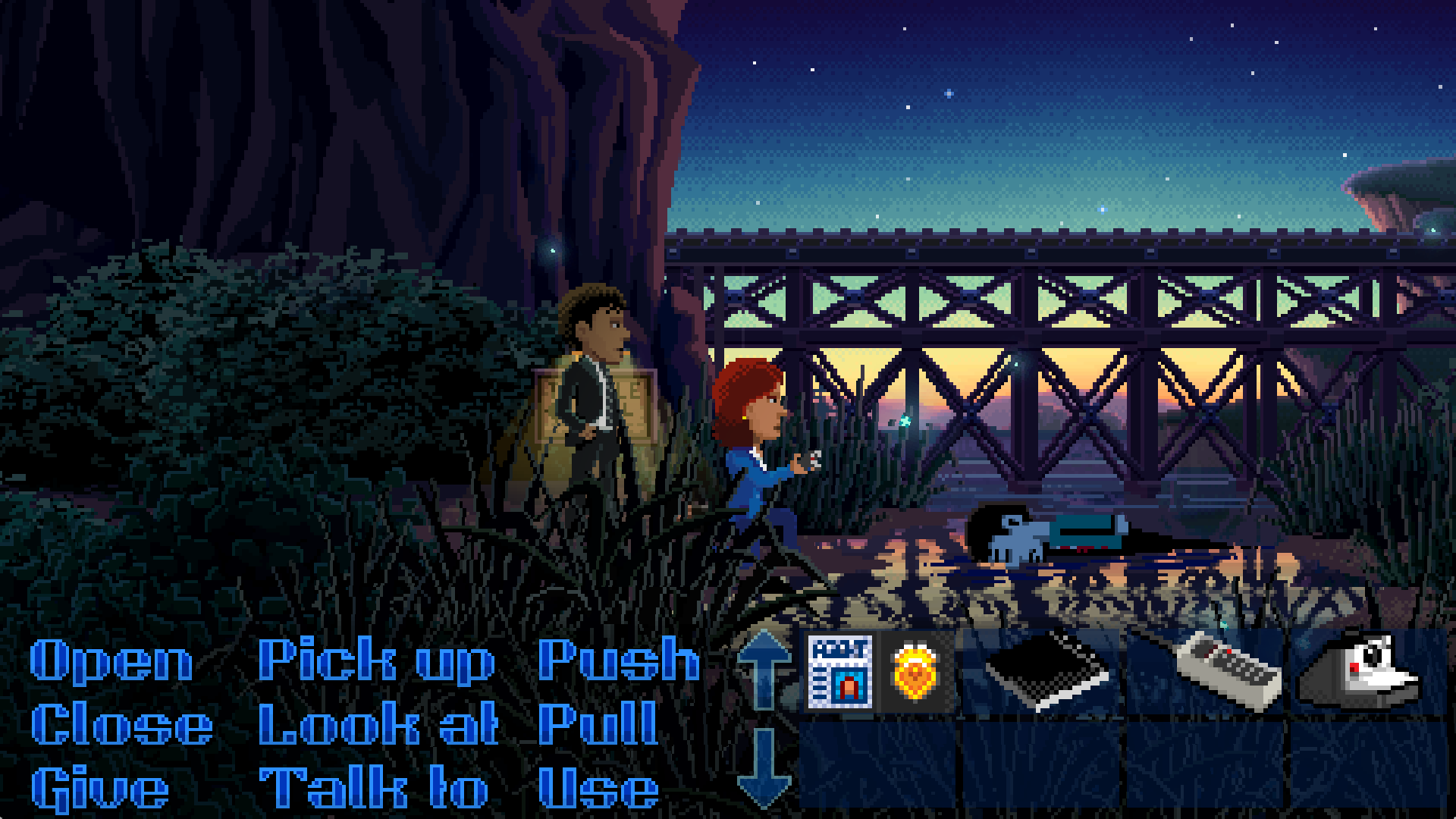
-
Thimbleweed Park PS4 review #15
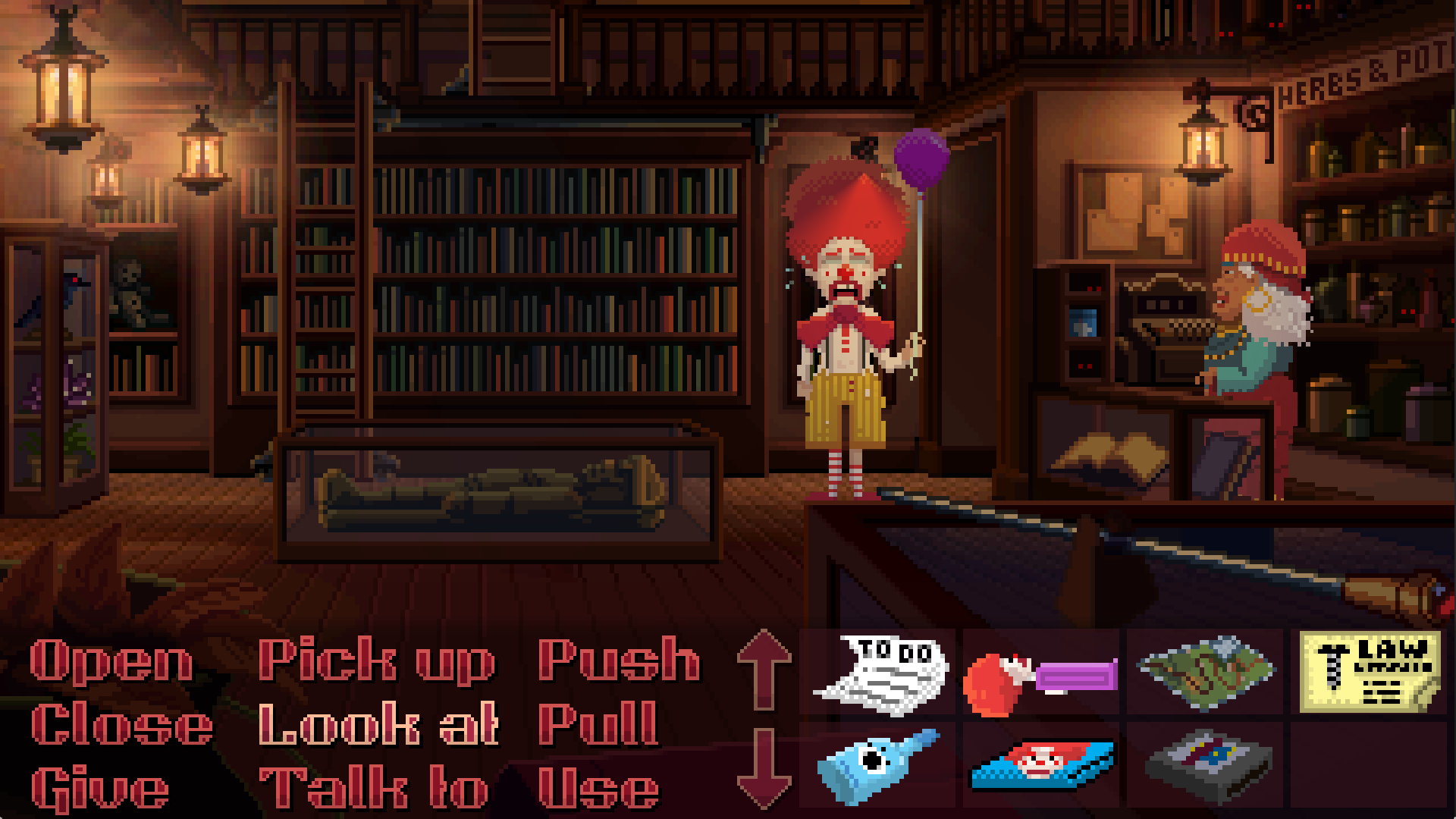
-
Thimbleweed Park PS4 review #16
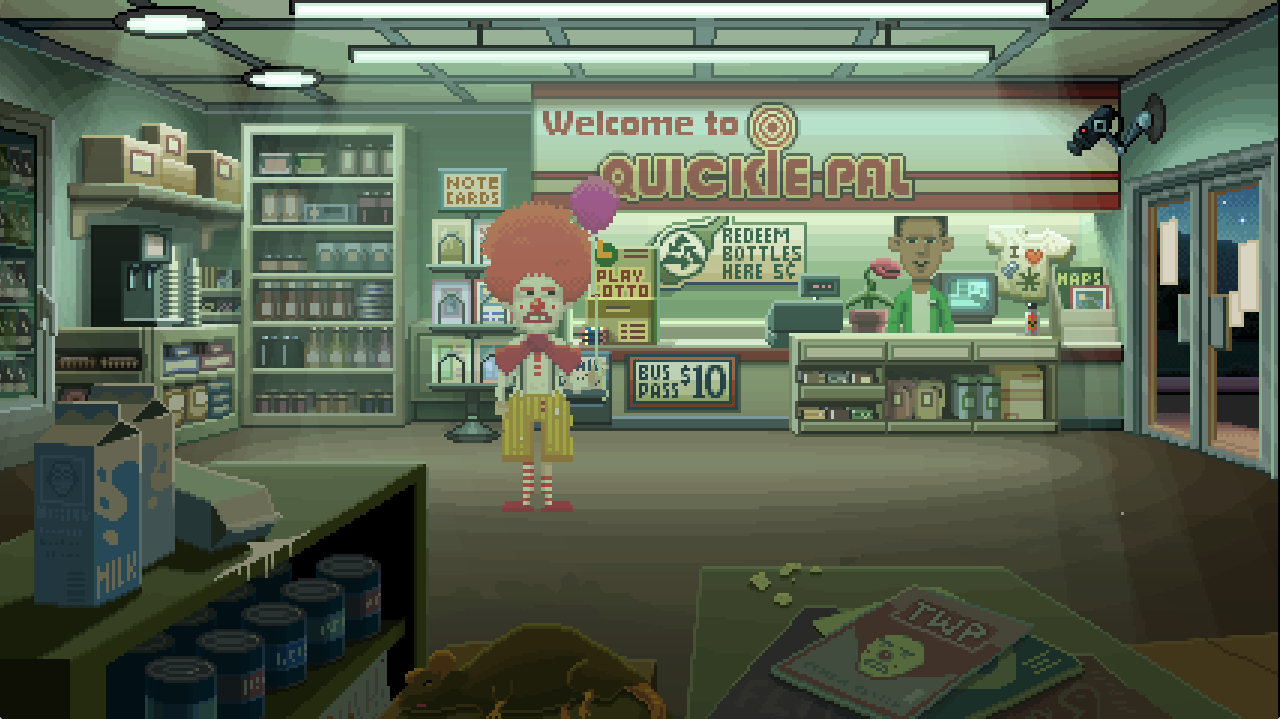
-
Thimbleweed Park PS4 review #17
